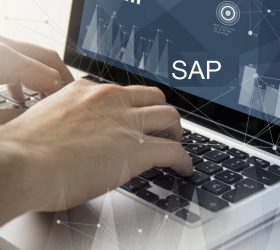For ages, machines have required human brains to help them structure data. However today, the world has evolved far enough to find the human-computer relationship on a new level. Building intelligence for data recognition is a task that is fast shifting from human beings to machines themselves. For example, SAP is widely involved in a new generation of enterprise-level AI. But what’s more worthy of notice is that today’s intelligence depends largely on past data of machines.
Structuring data has been the key responsibility of any organization, commercial or otherwise. Naturally, the efficiency of such a process is key to competitive advantage in the modern world, where supply chains are undergoing digital transformation thick and fast.
Functions and different requirements
Different functions require different kinds of data processing and data sources. As a result, multiple data analytics and communication systems are seen being used in organizations. It helps each unit function in the best possible manner, but naturally, there is a need to bring units to a single platform and a single centralized database. SAP has done well in that regard and appears to be moving towards a more comprehensive platform “as we speak”.
The SAP advantage
SAP Hybrids systems are the latest in technology, offering CRM and S/4 users an opportunity to bring all their functionalities to one bucket. Organizations can also use apps for analytics, big data, and achieve a new benchmark in responsiveness. Customer-facing functionalities are a rich source of feedback and personal data. The more advanced SAP gets, using all the data cohesively will free up resources in many business units. That said, organizations do feel more comfortable with the availability of an on-demand platform and corresponding services.
AI for processing the right data
Artificial intelligence, which is much in the news now, needs to focus on deciphering datasets for unique purposes. While each team has its objective, a more intelligent system should combine business applications in such a way that they help in synching up. One way to do that is using the SAP Fiori apps UI and optimizing and automating processes. Interfaces customized as per rules in an organization improve the understanding of data and reduces the turnaround for actions where human decisions are involved.
SAP Fiori
The framework is designed to allow organization personnel to use enterprise apps on their mobile devices and supports HTML5. The launch of this framework was received positively by leading organizations, back in 2014, especially as it would allow managers, executives, and partners to be exchanging information.
Applications are changing fast, be it in style, content, approach, or technological environment. Traditionally, SAP systems have always focused on improving the end-users capabilities and reducing turnaround. With increasing focus on global connectivity, SAP apps are seeking a new high in organizational efficiency.
The new hybrid digital system includes:
- Mobile technologies
- Online applications
- Cloud platforms
- The SAP Fiori UI
It must be noted that requirements emerge unexpectedly and teams always have the scope of better functional sync. Although technology has come a long way, it is hard to predict when a team might require a special-purpose analytics result from a partner or collaborating team. In fact, such situations are common. To avoid loopholes, technology leaders are focusing on a “hybrid platform” concept quite vividly.
With S/4HANA implementation non-users full of questions on how their enterprise systems will evolve, the crux lies in the choices companies make and whether they are able to respond to their unique requirements with the right technology features. Beyond the choice of cloud-based and on-premise systems lies the jig-saw puzzle of identifying the nature of operations, ensuring comfort with the UI, and reducing retraining costs all rounds.
